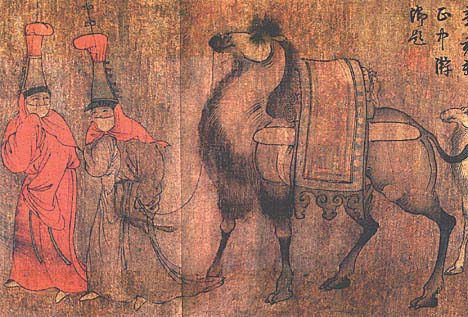
 In Song times, domestic life became an increasingly frequent
subject not only for poetry and drama but for paintings as well.
Under-represented in official written records, the lives and customs of
people of all classes, were depicted in great
detail in the visual arts. Women and
children in particular became a focus for several academy artists who
specialized in these genres. In this section we will look at
paintings portraying people in the private sphere of family and
friends. In many cases, the artists' sensitive treatment of
personality and character, as well as careful attention to, say, the
material distinctions between fine, elegant robes and the coarse textures
of peasants' everyday clothing, gives useful data about how social
class and status were expressed visually and the
dynamics of social interactions. In Song times, domestic life became an increasingly frequent
subject not only for poetry and drama but for paintings as well.
Under-represented in official written records, the lives and customs of
people of all classes, were depicted in great
detail in the visual arts. Women and
children in particular became a focus for several academy artists who
specialized in these genres. In this section we will look at
paintings portraying people in the private sphere of family and
friends. In many cases, the artists' sensitive treatment of
personality and character, as well as careful attention to, say, the
material distinctions between fine, elegant robes and the coarse textures
of peasants' everyday clothing, gives useful data about how social
class and status were expressed visually and the
dynamics of social interactions. |
 Paintings of children were popular at court and became a
specialty of a handful of artists. This subject matter was
considered auspicious, and was a favorite theme for New Year's pictures
given as gifts.
Paintings of children were popular at court and became a
specialty of a handful of artists. This subject matter was
considered auspicious, and was a favorite theme for New Year's pictures
given as gifts. 






